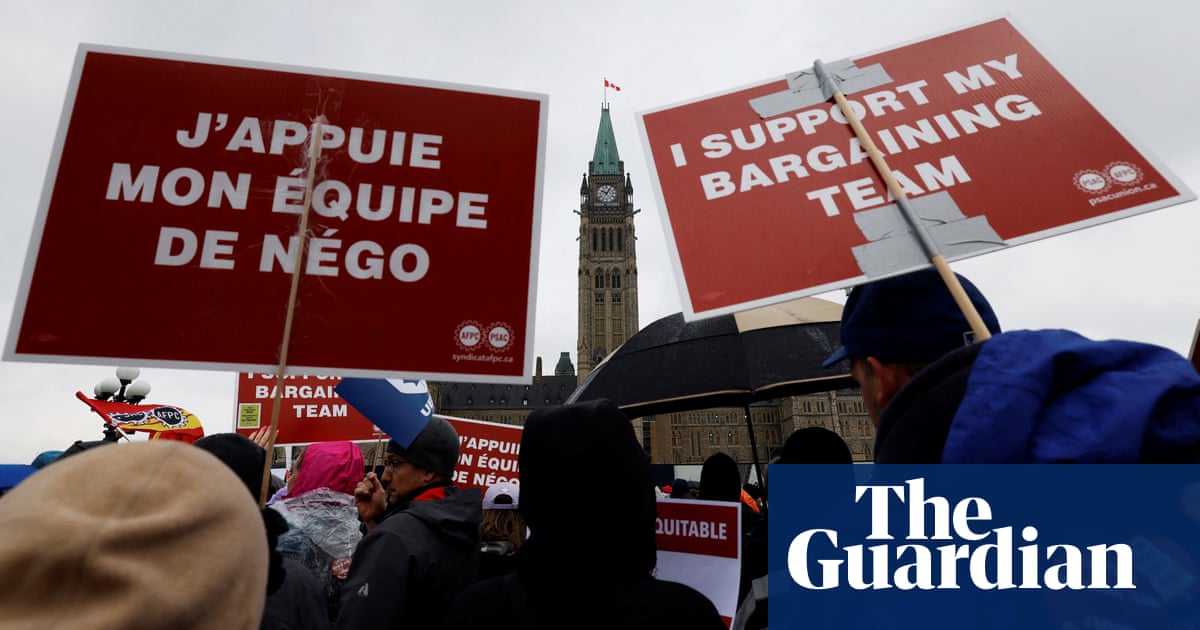
Passenger numbers on London Underground and rail stations around the country have dropped about 20% in the morning peak time after some – but far from all – took government advice to work from home.
Almost 1m entries or exits to the capital’s tube system – Britain’s busiest public transport network – were recorded before 10am, about 220,000 fewer trips than the previous Monday, as official guidance to work from home where possible came into effect.
Following the measures announced last week by Boris Johnson to curb the spread of the Omicron variant, Network Rail said footfall in the largest city stations it manages was down about 20-25% from a week ago, with the biggest drop, of 38%, at London’s Cannon Street, serving the City.
Leeds station recorded 35% fewer passengers, Birmingham 24% fewer, while numbers in Glasgow – in Scotland, where guidance was already to work from home where possible – were down 7%.
There were 17% fewer people at Manchester Piccadilly, and 30% fewer passengers on Manchester’s Metrolink tram system, according to Transport for Greater Manchester.
Bus travel in London was down less sharply, with 6% fewer passengers travelling before 10am.
Tube usage started to fall back in the second half of last week after the government’s plan B announcement, with passenger numbers down between 3% and 5% on the previous week’s mornings. The morning rush hour has now fallen back to below half of pre-pandemic levels, at 46% of normal.
However, a greater proportion of people are now using Transport for London’s services later in the day, for work and leisure, possibly attending still-permitted Christmas parties and shopping.
The reduction in passengers will further hit TfL’s battered finances. On Monday, the transport secretary, Grant Shapps, confirmed to the Commons a week-long extension to the government’s financial support for the capital, after talks over longer-term funding failed to reach agreement before the weekend deadline.
Shapps said the decision would provide “continued support to and certainty to Londoners while we work with TfL on their funding needs”.
Data unavailable for train or bus travel nationwide. Provisional rail figures from the start of December suggested weekday travel has started to decline from a 2021 peak of just over 70% of normal levels, although weather-related delays as well as fears over renewed Covid transmission were a factor.
Despite the fall in numbers in rush hour on Monday, early retail data suggested that plenty of people – working from home or otherwise – were still managing to reach UK shops.
Retail figures showed a rise in footfall in UK high streets, up 11% week on week, particularly in market towns, which have smaller, more local high streets and were 25% busier than last Monday. However, central London was a less appealing prospect for some, with footfall in the capital’s shopping districts down 10% week on week.
Diane Wehrle, insights director at Springboard, which compiled the data, said the drop in London demonstrated “the size of the office working population, and the impact of the reduction of this on activity in the capital”.
While the figures overall remain some way below 2019 levels, the new instructions on home working may have boosted some shops ahead of Christmas, Wehrle said.
“Despite plan B restrictions coming into force today, UK footfall [across all retail destinations] over the period up to 12pm on Monday is higher than last week (+5.2%).
“It appears that despite the working from home guidance, footfall is being insulated by Christmas shopping – indeed, it may actually be due to the working from home guidance that footfall has risen, as shoppers feel less nervous in visiting stores and destinations as they anticipate locations won’t be as crowded,” she said.












